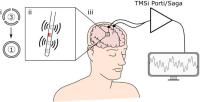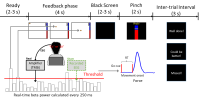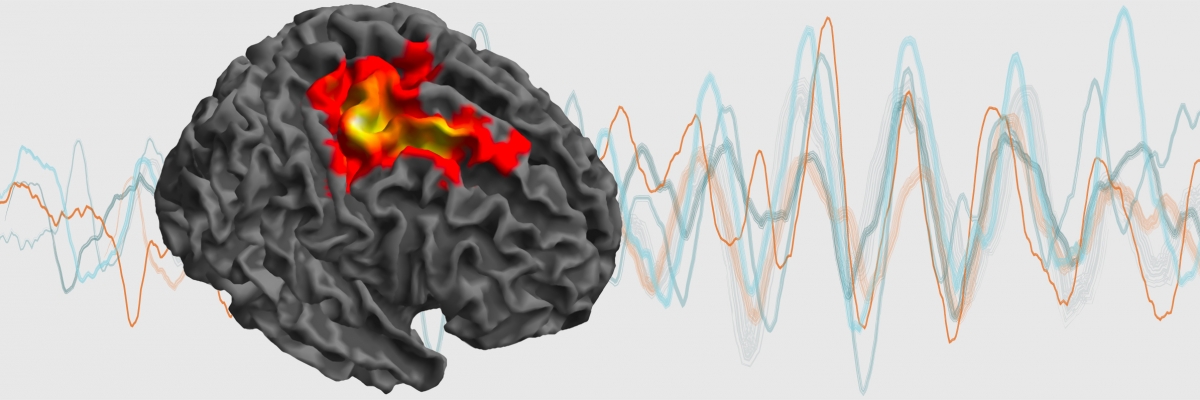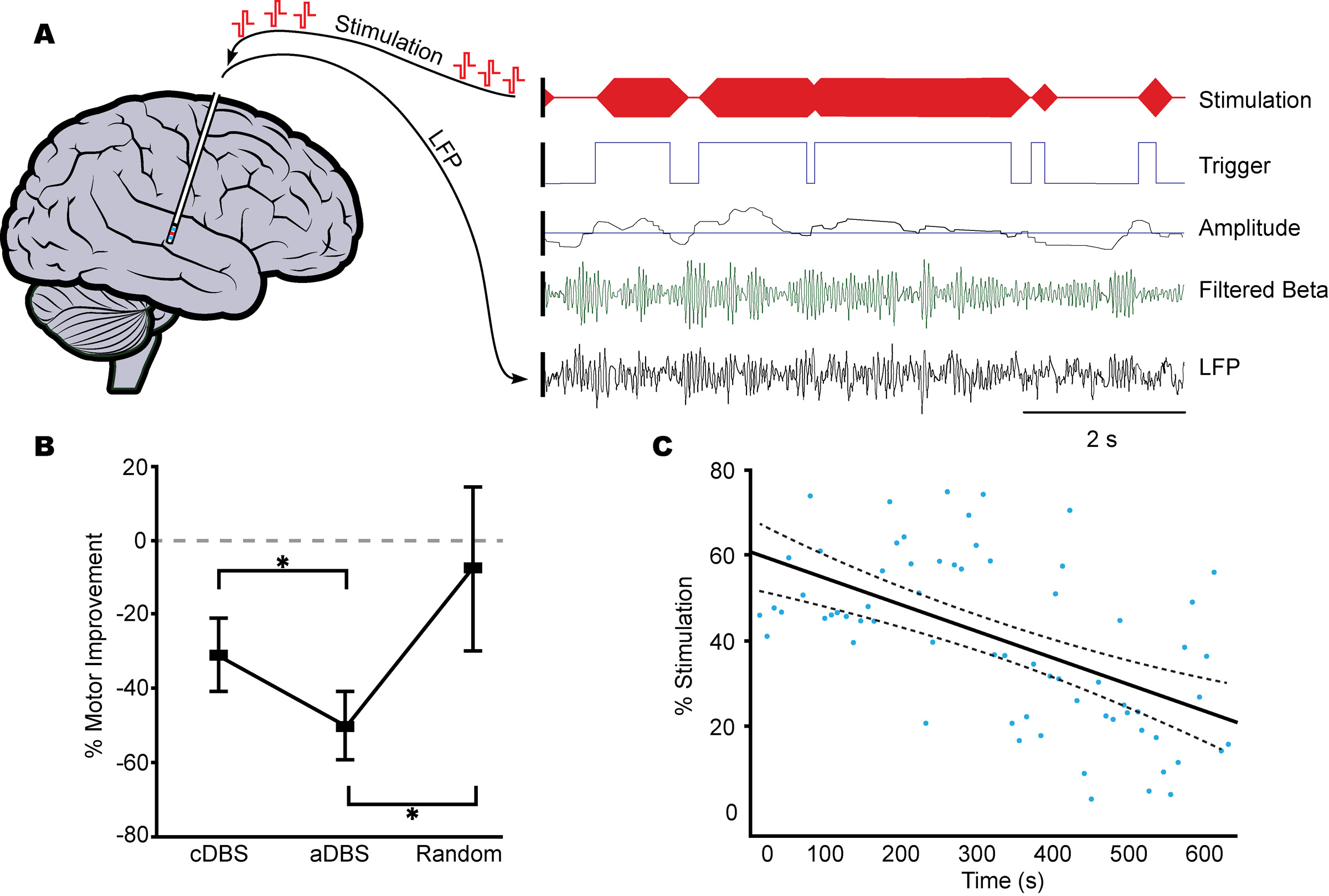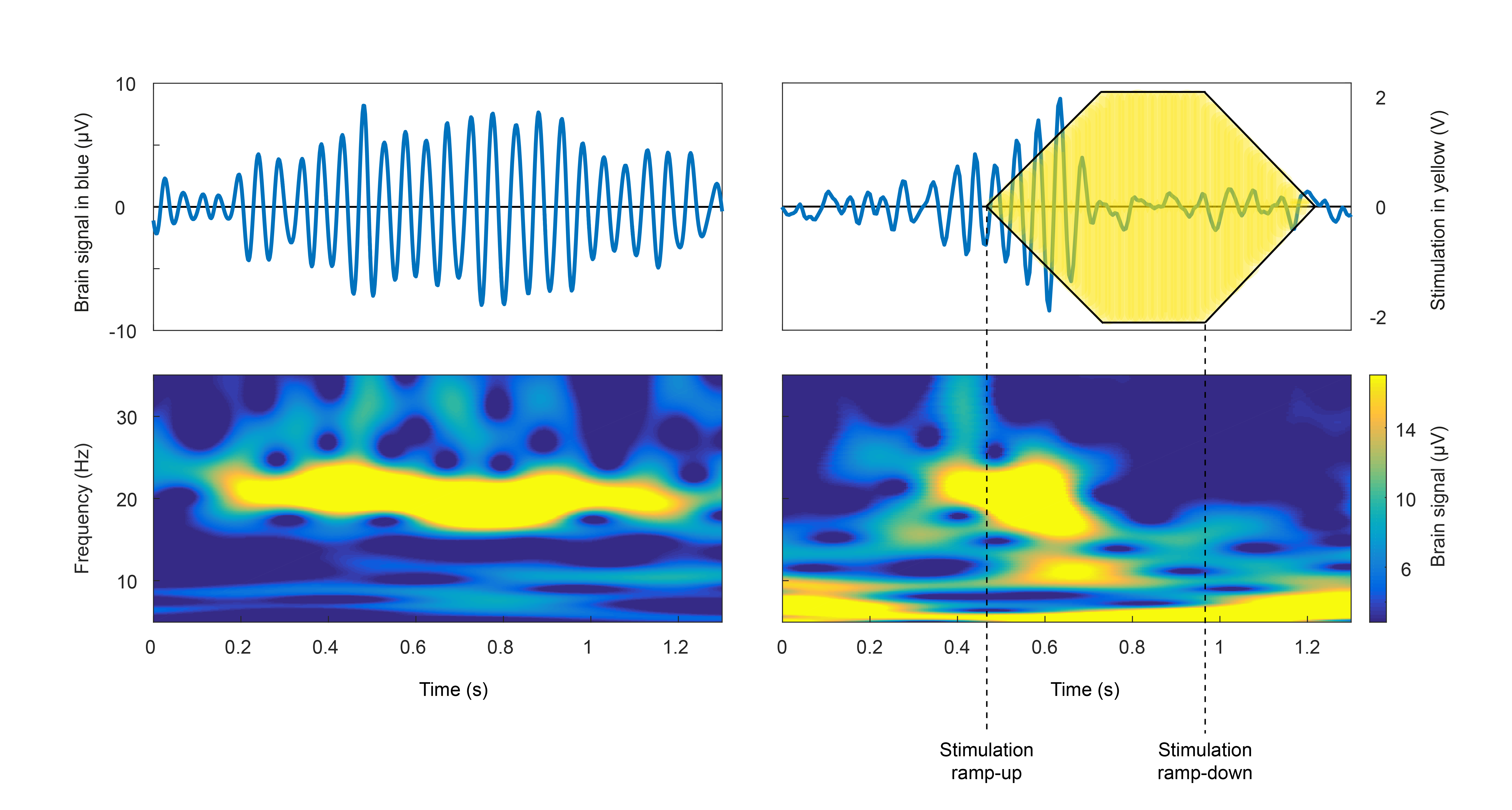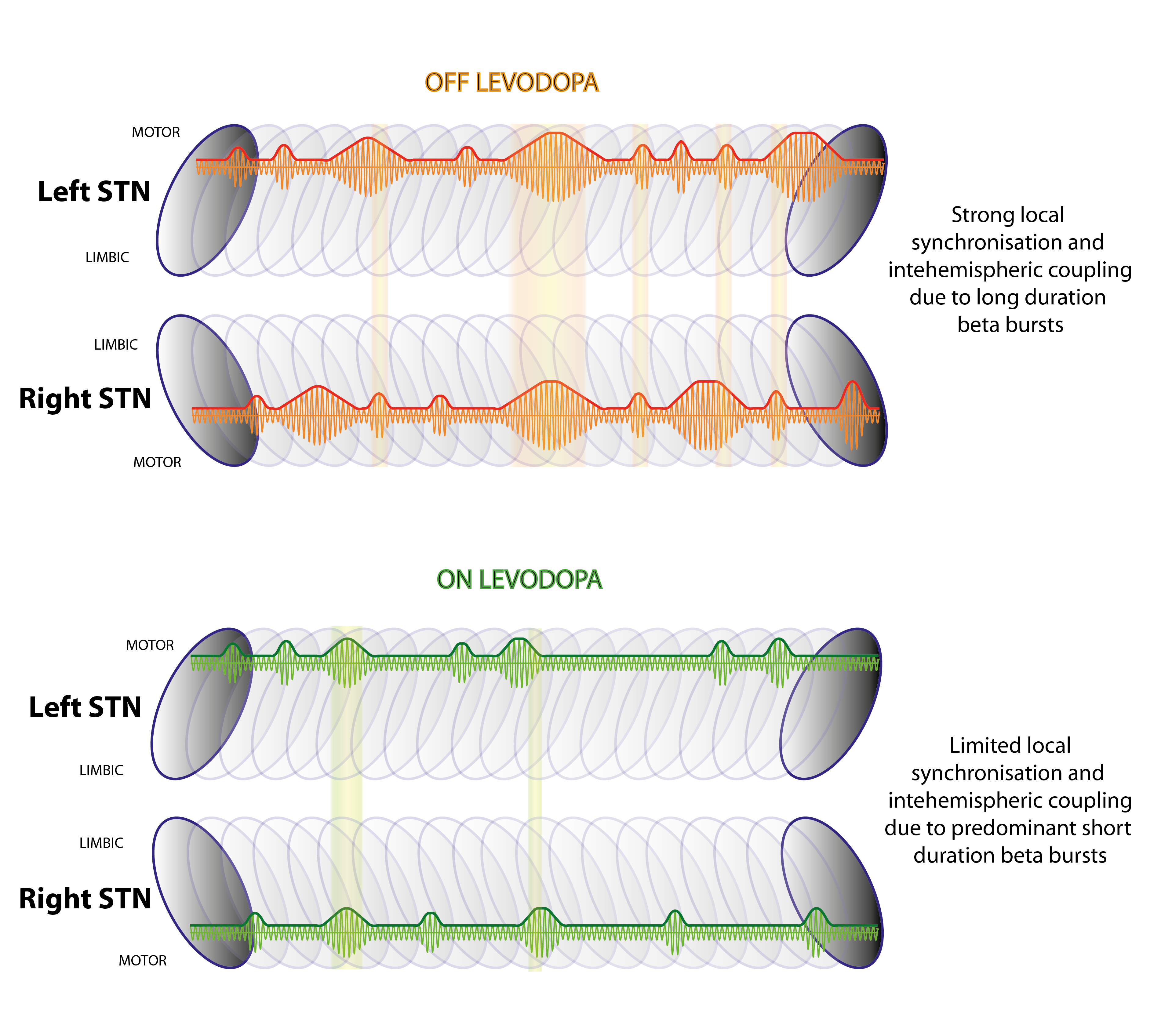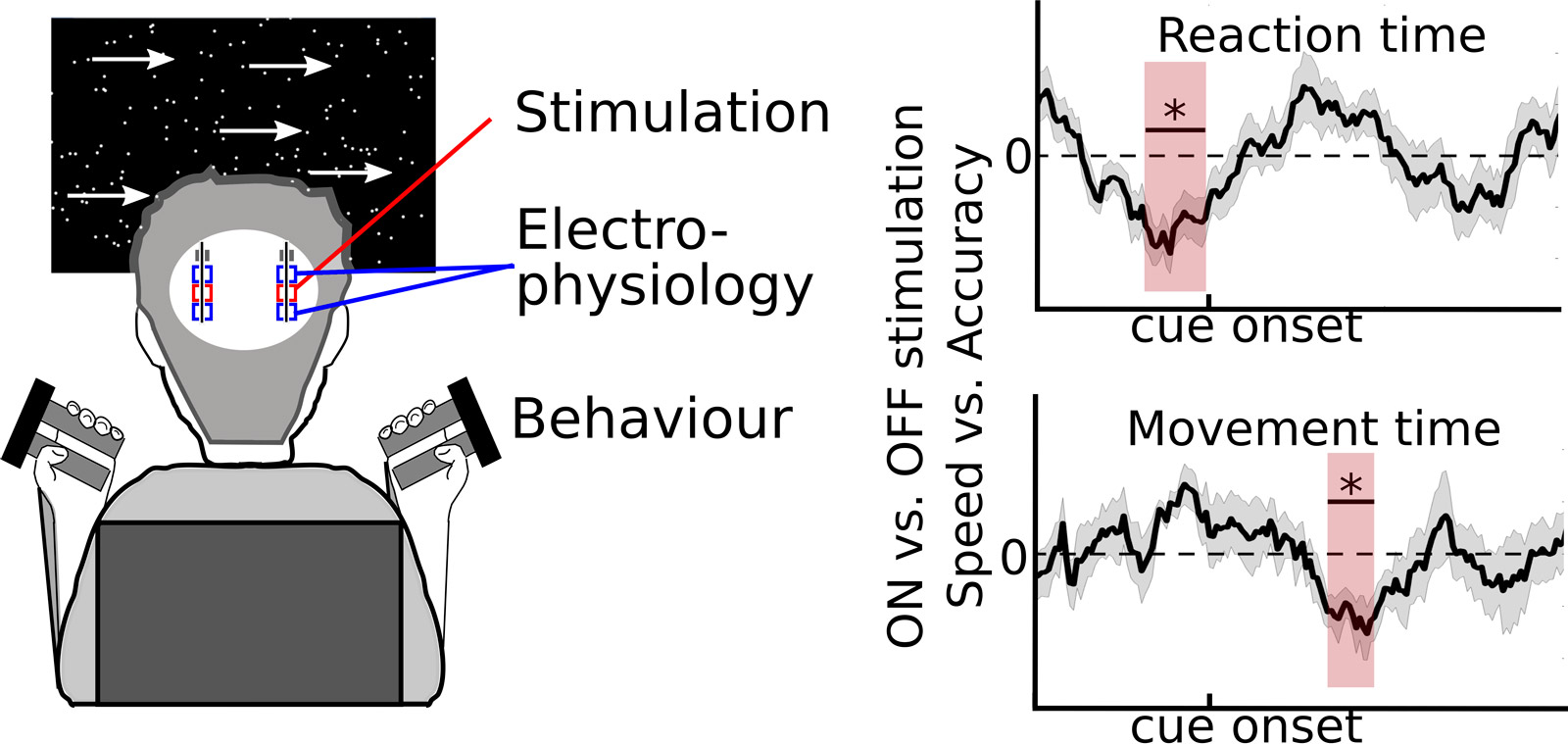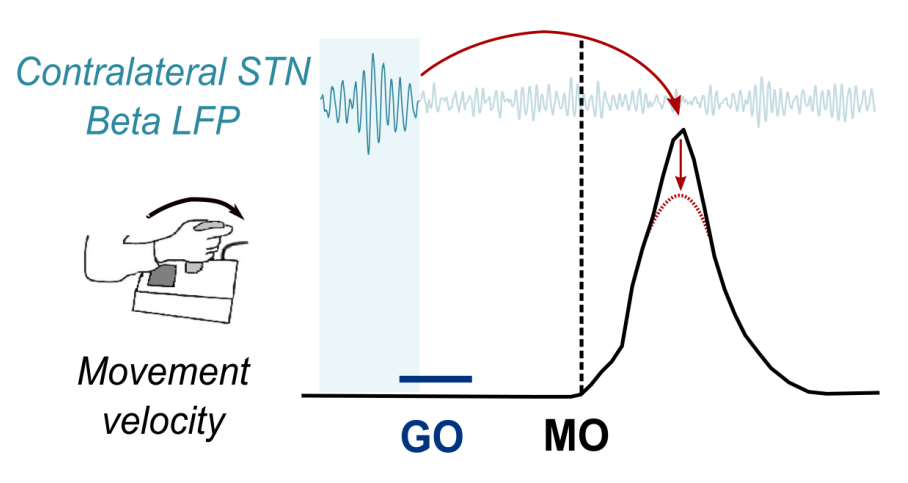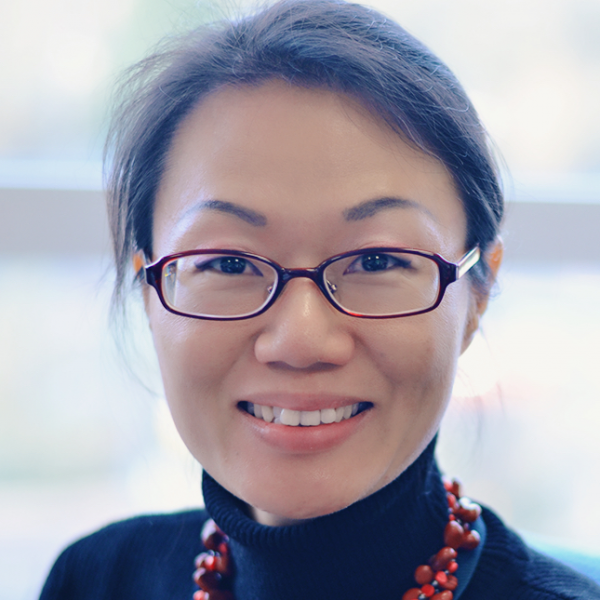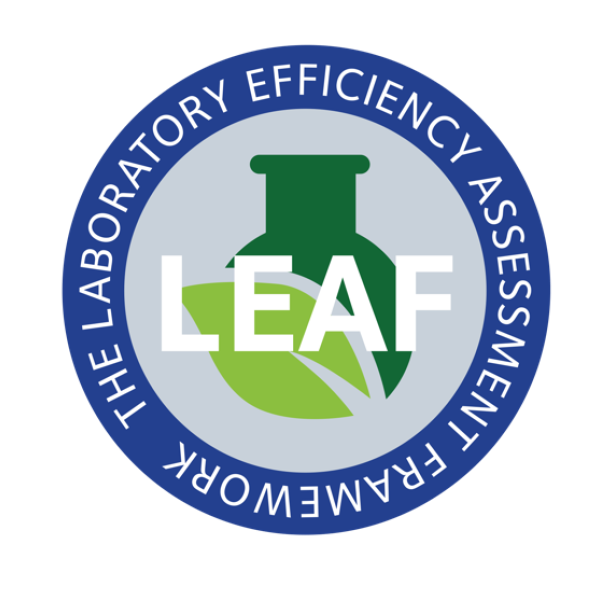Tan Group
Our goal is to define how activity in large populations of neurons is coordinated in healthy movement and how such coordination may go awry in diseases, translating this information in to improved treatment for Parkinson’s Disease, Essential Tremor and other disorders of movement.
The Group takes a multidisciplinary approach, combining experimental manipulations in healthy subjects and patients with sophisticated signals analysis and modelling. Our experimental manipulations include non-invasive brain stimulation, and often involve patients who have had deep brain stimulation electrodes implanted as treatment for problems with movement. Over the years we have made major advances in understanding how abnormal interactions between brain cells cause slowness of movement, tremor and stiffness in people with Parkinson’s disease. At the same time we have leveraged these insights to pioneer closed-loop approaches to therapeutic brain stimulation. Currently we are refining these closed-loop strategies still further, and extending them to the treatment of gait dysfunction and essential tremor. We are also capitalising on our understanding of circuit dynamics in the basal ganglia to help predict, with high spatial resolution, optimal sites for therapeutic stimulation, and are exploiting local dynamics in basal ganglia nuclei as a basis for Brain-Computer Interfaces that control the environment for paralysed patients.
- Oscillations within subcortico-cortical motor loops in health and disease
- Decoding circuit dynamics to understand and manipulate function
- Closed-loop approaches to the treatment of movement disorders like Parkinson’s and Essential Tremor
- Development of novel BCI systems based on subcortical signals for neuroprosthetic control and neural feedback training
- Non-invasive brain stimulation
We are at the beginning of a therapeutic revolution whereby we can interact with neural dynamics from moment-to-moment as necessary to reverse or ameliorate dysfunctional brain activity. To this end, we must record and interpret brain signals in real-time with sufficient temporal and spatial resolution to give nuanced control. Although electrical brain stimulation is already affording major therapeutic benefits, there is vast scope for improving and extending this to provide adaptive and tailored interventions, and for harnessing recent advances in non-invasive stimulation techniques to deliver multisite manipulation of brain circuits.
We are committed to fostering an inclusive work environment that celebrates diversity and promotes equal opportunity within our group and the wider MRC BNDU.
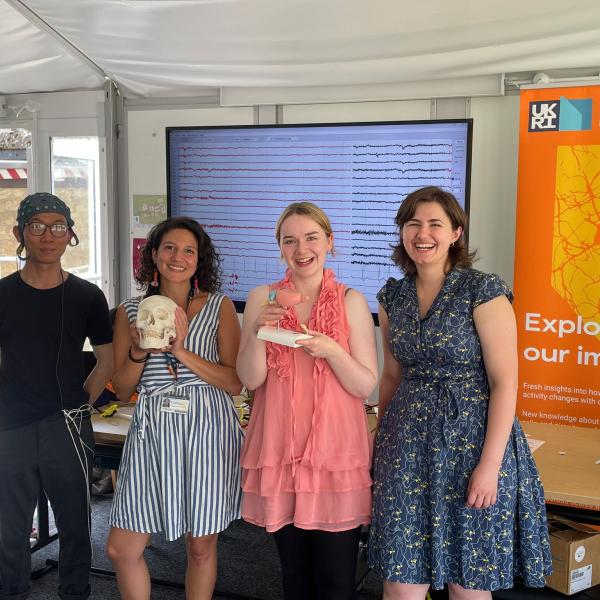
The enthusiastic BNDU team of scientists. (L-R) Shenghong, Chiara, Rosie and Ioana.
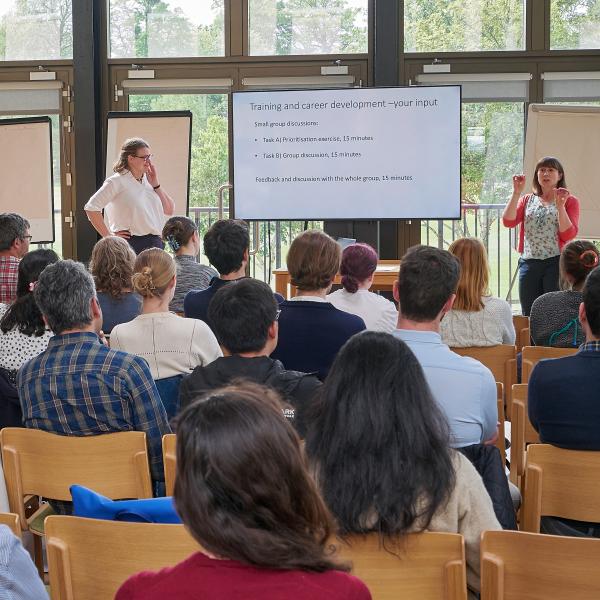
Mary Muers (far right) moderates an interactive session about training and career development opportunities.

After the viva voce: A happy D.Phil. candidate (centre) with satisfied examiners (left and right) and proud supervisors (far left, far right).
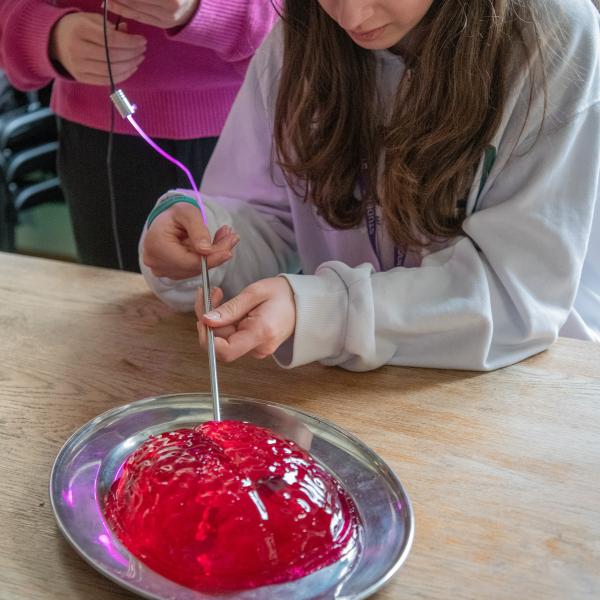
A visiting school pupil tries their hand at implanting a dummy stimulation electrode in a jelly brain!
Studentships
Project
Neurophysiological biomarkers for optimising adaptive Deep Brain Stimulation for Parkinson’s
Although Deep Brain Stimulation (DBS) is an established therapy for Parkinson’s disease, its potential for personalised symptom control remains underexploited. Recent advances in DBS technology now enable simultaneous neural sensing and responsive, tailored stimulation. These developments create new opportunities to identify neurophysiological biomarkers that could be targeted to alleviate specific symptoms, including tremor, gait disturbance, and cognitive impairment.
The goal of this PhD studentship is to advance our understanding of how activity within cortico-basal ganglia circuits contributes to specific motor and non-motor symptoms of Parkinson’s. These insights will inform the development of novel DBS strategies designed to normalise circuit dysfunction underlying individual symptoms. To achieve this, we will collect clinical and neurophysiological data from patients implanted with sensing-enabled DBS devices. Cortical activity, sleep, movement, and gait will be monitored using electroencephalography (EEG), electromyography (EMG), and wearable sensors. Advanced signal processing and machine learning methods will then be applied to identify biomarkers and to design targeted stimulation paradigms, which will be tested with patients.
The project will take place in the Brain Network Dynamics Unit of the Nuffield Department of Clinical Neurosciences and in the Medical Research Council Centre of Research Excellence in Restorative Neural Dynamics (MRC CoRE RND). Students will benefit from the extensive interdisciplinary skills training and personalised career development opportunities available within the Unit and the MRC CoRE RND. Students will receive specialised training in their areas of project research (see below) as well as, for example, in the translation and commercialisation of research, best practice in Open Science, and how to effectively involve and engage patients and the public with research.
Focusing on the cortico-basal ganglia circuit in Parkinson’s, this studentship offers the opportunity to work with cutting-edge techniques including wireless neural activity streaming from implanted DBS devices, high density EEG, EMG, and wearable sensor recordings. You will gain advanced training in patient facing research and in state-of-the-art analytical approaches spanning signal processing, computational modelling, and machine learning.
This four-year Ph.D. (D.Phil.) studentship offers three years of full-time tuition fees at the Home rate, and four years of non-taxable stipend at the full-time UKRI rate (including any uplifts announced). Both Home students and International students are eligible to receive this funding package. Please see further details about MRC/UKRI studentships and updated guidance regarding Home and International eligibility. Successful offer-holders who have applied by the December deadline may also be considered for other University of Oxford scholarships.
Interested candidates should possess, or expect to receive, a 1st class or upper 2nd class degree (or equivalent) in a related scientific discipline, e.g. biological or physical sciences, medicine, computer science, engineering, mathematics. Previous experience in neuroscience research is highly desirable.
Candidates must contact the lead project supervisor before submitting an application. To find out more about this studentship, the research project, and the application process, please contact Dr Ashwini Oswal by email on ashwini.oswal@ndcn.ox.ac.uk.
To be considered for this studentship, please submit an application for admission to the D.Phil. in Clinical Neurosciences at the Nuffield Department of Clinical Neurosciences (course code RD_CU1), following the guidance for applications to this course. On the application form, in the section headed ‘Departmental Studentship Applications’, please indicate that you are applying for a studentship and enter the reference code “26NDCN01MRC” into the funding tab.
The closing date for applications is 12.00 midday UK time on Tuesday 2nd December 2025.
Opening in November 2025, the MRC CoRE RND is an exciting team science enterprise that is focused on harnessing the moment-to-moment interactions between nerve cells (‘neural dynamics’) to transform medical device-based therapy for brain conditions. The MRC CoRE RND incorporates discovery research and translational research aligned to empirical neuroscience, computational neuroscience, experimental medicine, and biomedical engineering. The MRC CoRE RND is exceptionally collaborative, involving partners in academia, neurotechnology industry, research charities, and clinical services. It will champion values supporting a positive research culture.
Supervisors
Applications are invited from both Home students and International students to join a multidisciplinary team of researchers studying neurophysiological biomarkers to improve adaptive Deep Brain Stimulation for Parkinson’s. This studentship is available from the start of academic year 2026/27, is for 4 years, and will be co-supervised by Dr Ashwini Oswal, Professor Huiling Tan, Professor Hayriye Cagnan and Professor Andrew Sharott at the MRC Centre of Research Excellence in Restorative Neural Dynamics. The studentship project will also benefit from the expertise of Professor Alex Green at the Nuffield Department of Clinical Neurosciences.
Project
Phase-locked stimulation for modulating brain rhythms during wakefulness and sleep in Parkinson’s
In Parkinson’s disease, abnormal brain rhythms - such as elevated beta waves and disrupted slow waves - contribute to movement and sleep problems. Phase-locked Deep Brain Stimulation holds promise for correcting these brain activity patterns by timing stimulation to specific phases of rhythms. This studentship project will explore how phase-locked Deep Brain Stimulation can improve motor function and sleep in people with Parkinson’s, moving toward personalised brain stimulation therapies.
The aim of this PhD project is to determine how modulating abnormal brain rhythms with phase-locked Deep Brain Stimulation (DBS) can improve movement and sleep symptoms in people with Parkinson’s. The research will combine real-time brain signal processing with closed-loop stimulation to target beta rhythms during wakefulness and slow-wave activity during sleep. The studentship holder will work with people with Parkinson’s who have already received DBS, develop stimulation protocols using a computer-in-the-loop system, and help build software interfaces for implantable devices. Through collaboration with clinical and engineering teams, the project seeks to advance understanding of how brain rhythms relate to behaviour and how neuromodulation therapies can be better personalised.
The project will take place in the Brain Network Dynamics Unit of the Nuffield Department of Clinical Neurosciences and in the Medical Research Council Centre of Research Excellence in Restorative Neural Dynamics (MRC CoRE RND). Students will benefit from the extensive interdisciplinary skills training and personalised career development opportunities available within the Unit and the MRC CoRE RND. Students will receive specialised training in their areas of project research (see below) as well as, for example, in the translation and commercialisation of research, best practice in Open Science, and how to effectively involve and engage patients and the public with research.
You will receive advanced training in human neurophysiology, including recording and real-time processing of signals from within and outside the brain. You will gain hands-on experience with closed-loop brain stimulation systems and work directly with people with Parkinson’s, learning clinical research methods, behavioural testing, and sleep quantification. You will also be given opportunities to build skills in time-series analysis, machine learning, and software development for neurotechnology, including designing software interfaces for implantable devices.
This four-year Ph.D. (D.Phil.) studentship offers three years of full-time tuition fees at the Home rate, and four years of non-taxable stipend at the full-time UKRI rate (including any uplifts announced). Both Home students and International students are eligible to receive this funding package. Please see further details about MRC/UKRI studentships and updated guidance regarding Home and International eligibility. Successful offer-holders who have applied by the December deadline may also be considered for other University of Oxford scholarships.
Interested candidates should possess, or expect to receive, a 1st class or upper 2nd class degree (or equivalent) in a related scientific discipline, e.g. physical sciences, medicine, computer science, engineering or mathematics. Previous experience in neuroscience research is highly desirable.
Candidates must contact the lead project supervisor before submitting an application. To find out more about this studentship, the research project, and the application process, please contact Professor Huiling Tan by email on huiling.tan@ndcn.ox.ac.uk.
To be considered for this studentship, please submit an application for admission to the D.Phil. in Clinical Neurosciences at the Nuffield Department of Clinical Neurosciences (course code RD_CU1), following the guidance for applications to this course. On the application form, in the section headed ‘Departmental Studentship Applications’, please indicate that you are applying for a studentship and enter the reference code “26NDCN01MRC” into the funding tab.
The closing date for applications is 12.00 midday UK time on Tuesday 2nd December 2025.
Opening in November 2025, the MRC CoRE RND is an exciting team science enterprise that is focused on harnessing the moment-to-moment interactions between nerve cells (‘neural dynamics’) to transform medical device-based therapy for brain conditions. The MRC CoRE RND incorporates discovery research and translational research aligned to empirical neuroscience, computational neuroscience, experimental medicine, and biomedical engineering. The MRC CoRE RND is exceptionally collaborative, involving partners in academia, neurotechnology industry, research charities, and clinical services. It will champion values supporting a positive research culture.
Supervisors
Applications are invited from both Home students and International students to join a multidisciplinary team of researchers studying how phase-locked Deep Brain Stimulation can be used to modulate pathological brain rhythms during wakefulness and sleep in Parkinson’s disease. This studentship is available from the start of academic year 2026/27, is for 4 years, and will be co-supervised by Professor Huiling Tan, Dr Shenghong He, and Professor Tim Denison at the MRC Centre of Research Excellence in Restorative Neural Dynamics.
Recent Preprints
Like other Groups at the MRC BNDU, we are committed to best practice in open research. We have created and curated a range of primary data, metadata and related resources that can be readily downloaded by external users from the MRC BNDU's Data Sharing Platform. We highlight below just a few examples of the datasets and other resources we have shared for the benefit of our stakeholders.
